The closest grocery to me is a Korean market, so I don’t know why I don’t go by there more often.
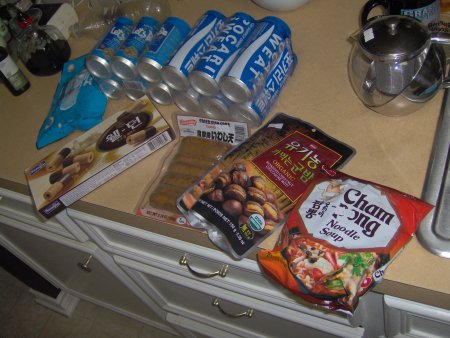
In the last run I got these roasted chestnut snacks:
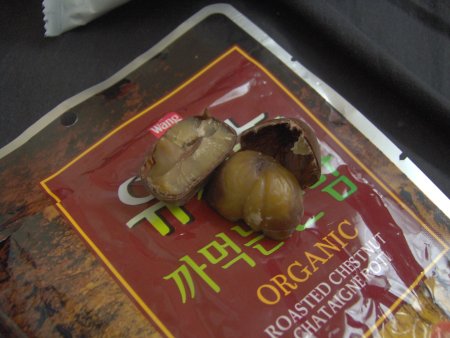
When I first picked one out of the bag, I thought it had a chocolate coating. I was surprised to find that it was actually the stiff chestnut shell. The meat inside is a nasty dry paste. I bet it was much better when it was hot and fresh.
The chocolate wafer cookies however, were exactly like I would have expected.
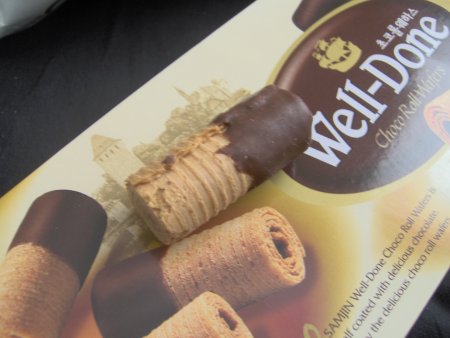
They tasted like chocolate-dipped waffle cones. I ate them pretty quick.
The "Soda" candies also tasted pretty mundane. Not like soda at all. Just a regular old hard candy.
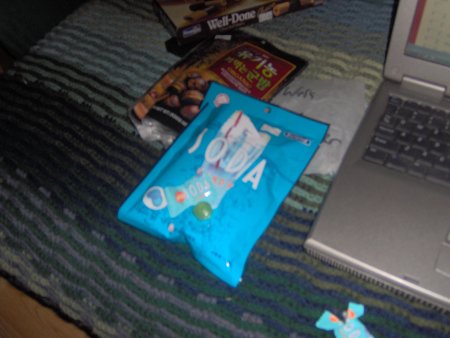
Whenever I go into an Asian grocery, I always check for Chef Chow’s Hot and Spicy oil, and then I check for bulk boxes of Hello Boss canned coffee.
Well, I almost never find them, but in the drink section I found a beverage called "Pocari Sweat."
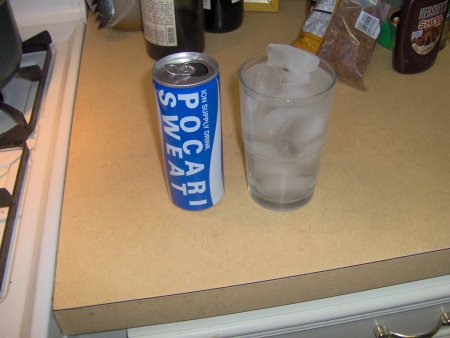
It’s an ion supply drink, for those of you who don’t think you have enough ions in your body. At first I thought, "Ha! What an odd translation error! They have no idea how unappetizing sweat is, do they?" Actually, it does taste like sweat. And grapefruit.
Moving briefly to South Asia, here’s a snack that’s some sort of fried cookie/cracker thing. Sort of like a rosette, and sort of like fried chow mein noodles.
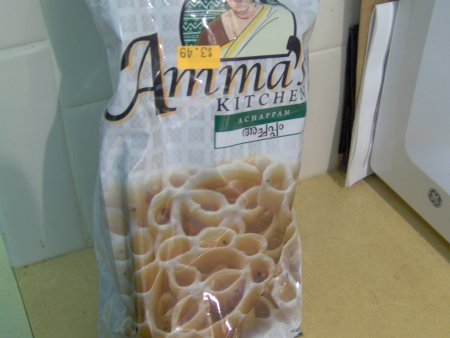
And now for the third culinary tradition, I present to you Goya brand ham croquettes. When God made pigs, he meant for them to be diced and breaded.
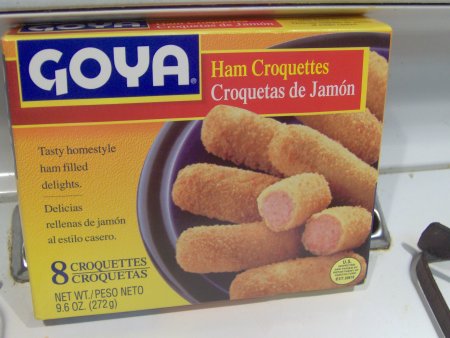
I like to think that the Goya food company is named after the painter.
In the ever-expanding search for Austin breakfast tacos, I visited La Casita, a Mexican restaurant on Anderson. I say Mexican, because from what I have gleaned, it serves food largely in the Monterrey style.
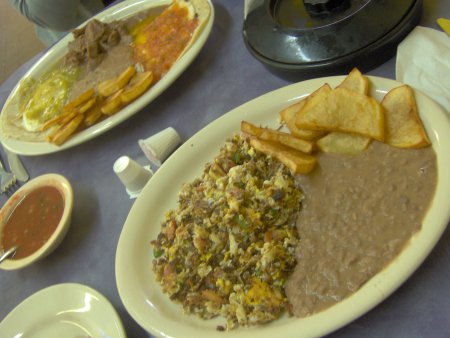
My food frakking partner chose a breakfast plate called the divorciado or something like that. Presumably because the fried eggs are served on either side of a heaping pile of carne guisada.

Behaving precisely the way one would expect, I ordered the dish with the name I had never seen before. Machacado de huevos.
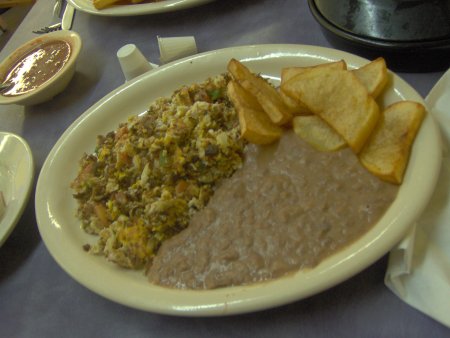
According to the internet, machacado is strips of dried beef. It’s made in the region around Monterrey because if you hang a cow out in the air around there it automatically desicates to the point of permanent preservation.
And now the fourth and final culinary tradition, possibly the richest and most rewarding of all the gastonomic arts: food courts.
Here’s a food court steak wrap:
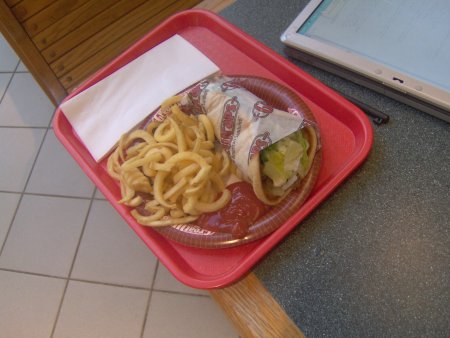
The "Great Wraps" place and the cheesesteak place are right next to each other at the foodcourt. Management and workers shuttle back and forth between the two counters, creating food at either counter that’s identical except for the bread product surrounding the meat.
At the food court sushi counter, they offer a "fruit ice."
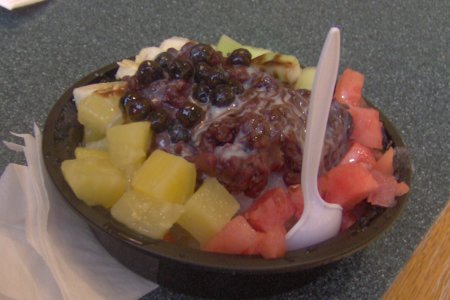
You can see from this photo that there’s watermelon cubes, banana, and diced pineapple. If you’re particularly learned in the ways of Japanese cuisine, you will notice that it’s all topped by red beans and tapioca pearls.
What is less clear from the photo, is that all that fruit is piled on top of a heap of shaved ice. Not icecream, as the lady behind the counter stressed to me, just plain ice. I was instructed to stir it all together. This made a soupy, icey mess that was too chunky to be a fruit smoothy and too fruity to be a snowcone.
Devouring that pound of slush and fruit dropped my core body temperature several degrees.